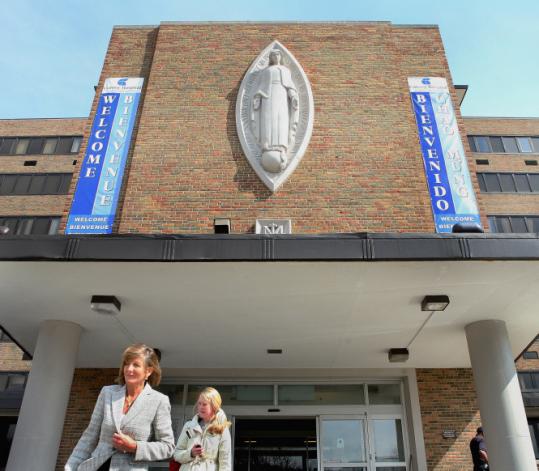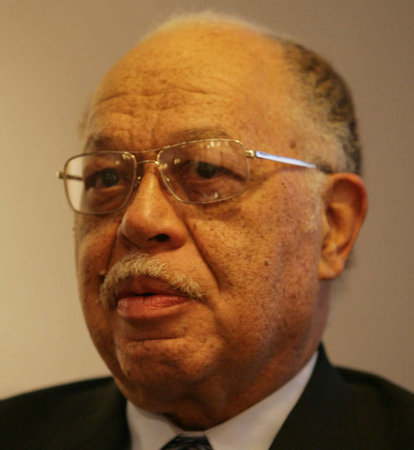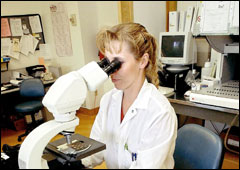Number of abortions drop slightly, but signs point to effort to further expand abortion empire
Cecile Richards, President of Planned Parenthood
Planned Parenthood clinics, which performed a record 333,964 abortions in 2011, reported 327,166 abortions in 2012, a 2% drop, according to PPFA's annual report. At the same time its revenues were the largest ever, exceeding $1.2 billion.
Considering that the overall national abortion trend has been down for a number of years, it was perhaps inevitable that Planned Parenthood, the nation's largest abortion chain, would eventually see some slight drop off.
In light of recent reports from the U.S. Centers for Disease Control that seemed to show yearly declines in the range of 3% to 5%, Planned Parenthood's one year decline of 2% is very modest.
Is this part of a trend or a one-time blip? Unfortunately, everything you read in the report hints that this decline may be short-lived.
Planned Parenthood is rich, powerful, and politically well-connected. Every page of the 2012-2013 annual report signals that it will continue to aggressively promote its abortion agenda both here and abroad.
From the numbers in the report, there's no clear explanation for the drop. It certainly wasn't as if Planned Parenthood suddenly began steering patients toward its other (already very limited) services for pregnant women.
Just 19,506 women received prenatal services at Planned Parenthood in 2012 (this would obviously include multiple services to individual patients rather than 19,506 individual patients). This is down from 28,674 the year before, a drop of nearly 32%! If any service appears to be being phased out, it would seem to be prenatal services to moms rather than abortion.
Adoption referrals, sent to outside agencies, are an even more infrequent occurrence at Planned Parenthood clinics. Just 2,197 Planned Parenthood patients were referred for adoptions in 2012, just slightly fewer than the 2,300 reported in 2011. Even with fewer abortions, it puts things in perspective to see that abortions still outnumbered adoption referrals at Planned Parenthood by a nearly 149 to one ratio!
Smaller PPFA clinics close, Mega-clinics open
Alexis McGill Johnson,chair, PPFA board
In the opening paragraph of the message from the group's chair that begins the report, Alexis McGill Johnson, and president, Cecile Richards, the team hails Planned Parenthood as "the nation's leading reproductive health care provider and advocate," specifying that they are "the most effective advocate in the country for policies that protect access to safe and legal abortion…"
Rather than long paragraphs on programs, the group uses several pages of its annual report to focus on "10 History-Making Moments" in which Planned Parenthood played some part.
Pro-lifers have rightly celebrated the closing of a number of abortion clinics around the country in the past few years, but have reason to be particularly concerned about Planned Parenthood's History Making Moment #3 – the opening of "more than 30 health centers" around the country in the last two years.
True, Planned Parenthood has closed clinics; they say they currently have "more than 700 health centers" around the country – just ten years ago, it was 866. But this can be very misleading.
Closures frequently involved the shuttering of small clinics that did not offer abortions and thus could not generate much revenue. The new clinics going up are often large, modern behemoths, professionally designed and decorated mega-clinics set up to process large volumes of clients and perform large numbers of abortions, and many of these are the new clinics to which Planned Parenthood must be referring. (See NRL's factsheet, Planned Parenthood: MegaClinics & Mergers)
Revenues again up
The annual report shows that these closing clinics have done little to hurt Planned Parenthood's bottom line. Revenues at the abortion giant reached another record this year, reaching $1.2 billion ($1,210,400,000, to be more precise) for the fiscal year ending June 30, 2013. Close to half (45%) of that came from the pockets of federal, state, and local taxpayers, with $540.6 million in revenue from "Government Health Services Grants and Reimbursements."
No one knows exactly how much income Planned Parenthood generates from abortion, but it surely considerably more than the 3% they tout in many of their public pronouncements. Ignore for a moment that many Planned Parenthood clinics perform abortions well into the second trimester, when they are considerably more expensive, and that Planned Parenthood has long been in the forefront of promoting more costly chemical abortions using the abortifacient RU-486. Even if we treat all of Planned Parenthood's 2012 abortions as standard, first trimester abortions, the revenues from 327,166 would easily top $147 million, close to 20% of the figure Planned Parenthood reported for all expenses associated with "medical services" for the most recent fiscal year.
The advent of ObamaCare promises even more revenues and probably more abortions. "Health Care Expansion" was #1 among Planned Parenthood's "History Making Moments" for 2012, as Planned Parenthood celebrated that the "Affordable Care Act goes into effect, with the women's preventative benefit that Planned Parenthood led the fight to include."
PPFA abortions increase over time while overall numbers drop
Despite this slight drop, there is nothing in these newest figures threatens to dislodge Planned Parenthood as the nation's largest abortion provider and promoter. PPFA accounts for at least 27%-29% of the intentional deaths of unborn babies in the United States.
Beyond the services statistics, there are strong restatements and reaffirmations of Planned Parenthood's pro-abortion policy and plans. (See also "Five Takeaways from PPFA's Annual Report," http://nrlc.cc/1h3T4JM.)
Number 6 of the "10 History-Making Moments" in which Planned Parenthood played some part–"Wendy Stood"–features a page high photo of Wendy Davis. Davis is the Texas state Senator who Planned Parenthood says filibustered a "draconian abortion law" and lit a fire in that state and led the public to rise up against "unprecedented attacks on women's health at the state level, from North Dakota to North Carolina." (Davis is now running for governor.)
The laws in these cases are not specified, though it should be noted that the law that Davis famously filibustered featured "draconian" provisions such as protecting 20 week old pain-capable unborn children from abortion and requiring that abortion clinics meet some minimally basic safety standards so that women in Texas were not treated like those in abortionist Kermit Gosnell's house of horrors.
PPFA looks ahead
Planned Parenthood spent millions on the 2012 presidential election and was heavily involved in Virginia governor's campaign. Its political arm stirred up phantoms about attacks on women's health care, on cancer screenings (remember that many Planned Parenthood clinics offer abortion, but not mammograms), in the process misleading many voters.
It is clear that the wealthy abortion giant isn't going to just walk away. But let this small drop in abortions be a reminder that the efforts of pro-lifers, educating their communities, voting, passing laws, reaching out to abortion vulnerable women, and praying can make a difference. A woman who finds out there are better, life-affirming alternatives to abortion may decide not to be Planned Parenthood's latest customer or conscript.
And when a child lives and a mother thrives, that's a real "history making moment."
To read the report for yourself, go here.
Contact: Randall K. O'Bannon, Ph.D. NRL Director of Education & Research











